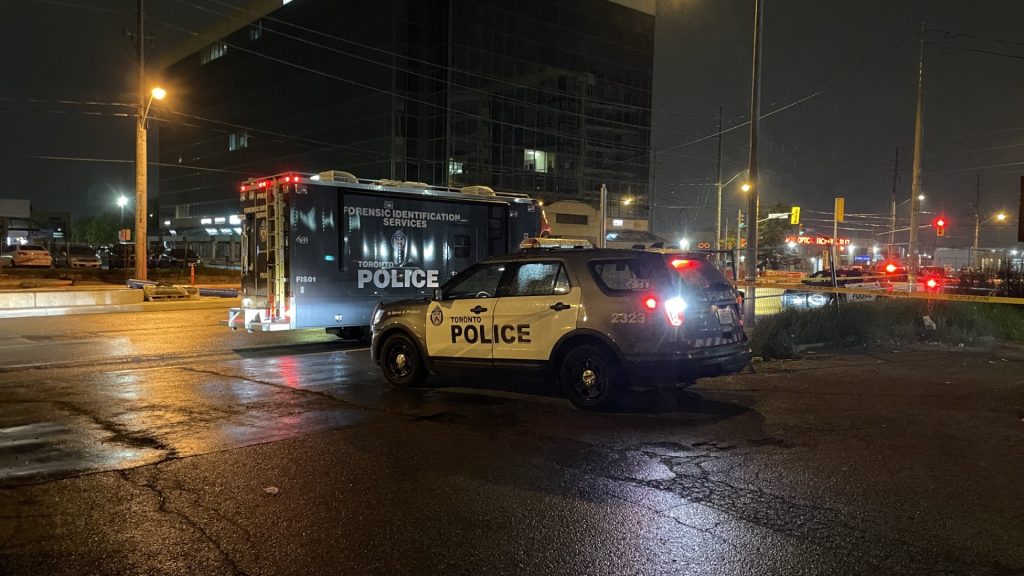COVID-19: A closer look at how air filtration is being used in Ontario’s schools
Posted January 13, 2022 6:55 pm.
Last Updated January 13, 2022 7:26 pm.
With Ontario’s schools set to return to in-person learning on Monday, officials are once again pointing to improved ventilation investments in an effort to keep classrooms safe despite renewed questions about air quality amid a surge in COVID-19 cases.
During an update on Wednesday, Ontario Education Minister Stephen Lecce said the provincial government was in the process of sending out approximately 3,000 more HEPA (high-efficiency particulate air) filtration units to classrooms in addition to 70,000 others deployed since September.
“Every single school has been inspected. We use the highest quality filters MERV-13s,” he told reporters.
Difference between MERV and HEPA filters, and what it means for schools
MERV (minimum efficiency reporting value) is a filtration scale between one and 20 with one being the least strong, capturing less than 20 per cent of particles that are just between 0.3 and 1 micron (a millionth of a metre). MERV-20 is the best possible and mostly seen in sterile cleanrooms.
HEPA filters are a sub-category of the MERV scale, developed by the American Society of Heating, Refrigeration and Air Conditioning Engineers, and equals MERV-17 — meaning the filters remove around 99.97 per cent of particles.
MERV-13 filters, the ones Lecce said have been installed at thousands of schools, remove almost 80 per cent of particles between 0.3 and 1 micron.
“When we look at the way schools are designed, they’re designed for MERV-8 before the pandemic. Aerosols are an important transmission route for COVID-19, so let’s increase the filtration to MERV-13,” Marina Freire-Gormaly, an assistant professor with York University’s department of mechanical engineering, told CityNews on Thursday.
She leads a team of researchers probing airborne COVID-19 transmission, studying how to improve systems by using things like computer modelling such as mapping a patient’s cough in an isolation ward going toward the HVAC outlet.
RELATED: Ontario students will return to class next Monday
Freire-Gormaly said the team has been studying school settings and is set to release further information related to filtration and air quality in classrooms.
However, when it comes to ventilation in schools generally, she said doing facility-wide HEPA upgrades is a costly and intrusive proposition.
“When you put in a new filter, what’s happening is that that filter is going to prevent the air from flowing through and it’s going to filter it,” Freire-Gormaly said.
“So the tighter the weave on that filter, the more pressure drop or the harder the resistance is when you try to go through the filter, and as you increase that pressure drop or increase the resistance of the air, it means that you need a corresponding bigger fan which will require more power to run and all of the ductwork might need adjustment.”
She said in the absence of major retrofits and adopting more stringent standards for newly built schools, officials must look at ways to increase fresh air intake, keep masking policies (with a preference of N95/KN95 masks), continued usage of MERV-13s and HEPA filtration units near where teachers are speaking since that is wearing the most particles would typically be expelled.
“It’s much better to filter at the source where you’re breathing out or talking and that way we can capture it more locally,” Freire-Gormaly said.
Calls for greater government action going forward
Freire-Gormaly said while the Ontario government has taken steps in the right direction when it comes to air filtration, a larger, ongoing dialogue needs to occur.
“We need to keep improving our buildings and improving the air quality because even as the pandemic hopefully eventually wanes, there may be other transmissible diseases and we always have a flu season,” she said.
“We should really look at what happened during the pandemic and the risks of different diseases transmitting using aerosols, and improve the building codes, and create a committee to delve into the details to see how we can improve indoor air quality going forward in new builds and also any standards that should be implemented for upgrading existing buildings.”
Martin Luymes, vice-president of government and stakeholder relations with the Heating, Refrigeration and Air Conditioning Institute of Canada, echoed the call for the provincial government to conduct a review with an eye to updating standards in light of what has been seen in terms of airborne transmission of COVID-19.
RELATED: Schools improve ventilation ahead of new year but parents still not breathing easy
“There’s a pretty big gap between what the minimum requirements are under the [Ontario Building Code] versus what our industry … could deliver if asked. The standards aren’t anywhere close to optimal in terms of human comfort and health,” he told CityNews Thursday evening.
Luymes acknowledged there would be higher costs would be a factor in construction and added the bigger issue revolves around the standards for older buildings and what the associated retrofits would involve.
“I don’t think [governments] have a choice, but frankly the challenge is going to be is a gamble,” he said.
“Going forward, the building code — when we build new schools or new health care facilities — we should learn from the pandemic the types of things we should be taking into consideration in the design specs … maybe we need to place more emphasis on the type of filtration.”










